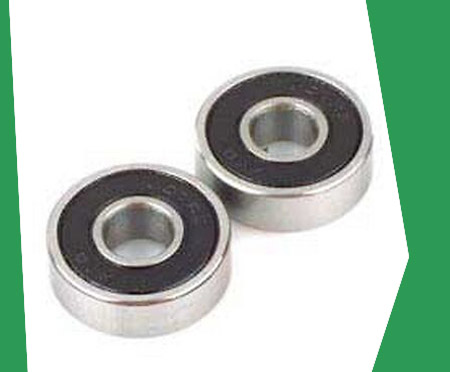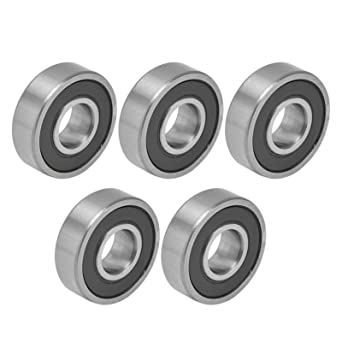
Horiaki India Private Limited is Actively Engaged in the Manufacturing Supplying and Exporting of Rubber Bearings, Industrial Rubber Bearings Rubber Moulded & Extruded Parts and Rubber to Metal Bonded Parts Applicable for Use in Automobile and other Industries. Rubber Products, Rubber Molded Products, Rubber Profiles, Rubber Tubes, Rubber Gaskets, Orings and Bushes are Some of the Major Products that We Deliver. The Availability of Highly Skilled Professionals Holding Expertise in the Field Put Efforts to Raise the Standards of Products
A rubber bearing is defined as a device which permits constrained relative motion between two parts—rotation or linear movement. The fundamental purpose of a bearing is to reduce friction and wear between rotating parts which come in contact with one another in any kind of mechanism. Bearings are classified broadly into categories according to the motions they allow and according to their principle of operation. Each type of bearing is used for different purposes. Bearings are made of various materials but rubber is a widely demanded material for making bearings. Rubber has proved to be an excellent bearing material, especially under circumstances in which abrasives may be present in the lubricant. The rubber used to make bearings is a tough resilient compound similar in texture to that in an automobile tire. Apart from this main application, bearing devices must also allow –or prevent- relative movements (rotation and movement) of the joining elements, and have a durability according to the life of the structure they are placed in.
Among all different kinds of bearing, elastomeric bearings – in their different types- are the best known and most often used.

Types of rubber used in making bearings
Natural Rubber
Neoprene
Butyl Rubber (IIR)
Butadiene Rubber (BR)
Ethylene Propylene Diene Monomer (EPM, EPDM)
Types of Rubber Bearings
Plain and Laminated elastomeric bearings: Bearings for construction industry in neoprene and natural rubber compound. Laminated rubber bearings provide the simplest method of isolation and are most suitable for high frequency ground motions.
High Damping Rubber Bearing (HDRB): This is ideal for seismic isolation. They are vertically stiff, capable of supporting vertical gravity loads, while being laterally flexible, capable of allowing large horizontal displacements. In effect, during an earthquake, the ground is allowed to move back and forth under a base isolated, while leaving the building to remain "stationary." These HDRB bearings are flexible and have energy absorption capability. The rubber bearings isolation system partly reflects and partly absorbs some of the earthquake input energy. Significant reductions of structural and non-structural damage can also be attained through the use of HDRB rubber bearings seismic isolation.
Low Damping rubber bearing: In the isolation system, the different types of rubber bearings are designed and used along with dampers. The system that is popularly adopted for buildings is the elastomeric or rubber bearings with low damping. These rubber bearings are widely acceptable because of their longevity, economy and better control on dynamic properties.
Lead Rubber Bearings (LRB): A lead rubber bearing is a much larger laminated bearing manufactured from layers of rubber which are sandwiched together with layers of steel and in the middle of the bearing there will be a solid lead "plug." Top and bottom of the LRB is fitted with steel plates, which are used to attach bearing to building through its foundation. Lead rubber bearings are designed in a way that the bearing is stiff and strong in vertical direction and flexible in horizontal direction. Lead, inserted as center of LRB dissipates the energy of earthquake and the rubber, reinforced with steel plates helps in providing stability, supports structure and isolates vibrations.
Features

Flexible
Highly resistant
Durable
Why Us?

